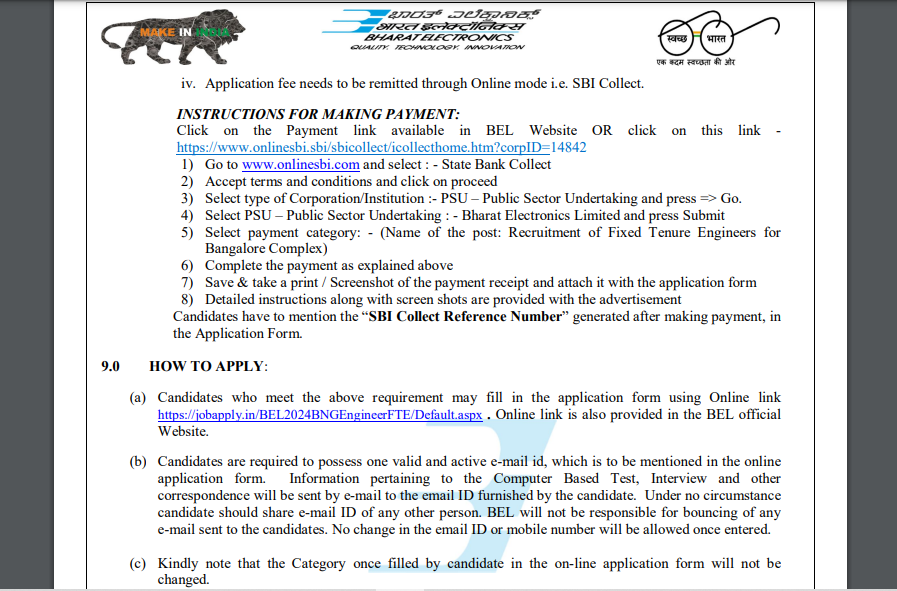Learn about the history, significance, and impact of the International Day against Nuclear Tests in fostering global nuclear disarmament efforts.
Introduction
Nuclear weapons testing has a dark history marked by over 2,000 tests since its inception on 16 July 1945. The early days of nuclear testing lacked consideration for the devastating effects on human life and the dangers of nuclear fallout. Today, the International Day against Nuclear Tests, observed on 29 August, serves as a global reminder of the critical need to eliminate nuclear weapons testing and work towards a nuclear-weapon-free world.
International Day against Nuclear Tests 2023
Historical Perspective
- Early Ignorance: Initial nuclear tests didn’t account for the destructive consequences they would unleash upon humanity and the environment.
- Hindsight and Tragedy: The terrifying impacts of nuclear weapons testing, including uncontrolled conditions and the power of modern nuclear weapons, have highlighted the urgency for change.
Origins of the International Day against Nuclear Tests
- UN General Assembly’s Resolution: On 2 December 2009, the United Nations General Assembly designated 29 August as the International Day against Nuclear Tests.
- Purpose and Goals: The resolution aims to raise awareness about the effects of nuclear testing and the importance of ceasing such tests for a nuclear-weapon-free world.
- Inspiration from Kazakhstan: The closure of the Semipalatinsk Nuclear Test site in Kazakhstan on 29 August 1991 played a pivotal role in initiating this resolution.
Observance and Activities
- Inaugural Commemoration: 2010 marked the first observance of the International Day against Nuclear Tests, leading to subsequent years of global activities promoting its goals.
- Diverse Initiatives: The day is celebrated through various events, such as symposia, conferences, exhibitions, media broadcasts, and competitions, promoting dialogue and awareness.
Role in Nuclear Disarmament
- Bilateral and Multilateral Efforts: The International Day against Nuclear Tests has contributed to both governmental and civil society efforts towards banning nuclear tests.
- Total Elimination of Nuclear Weapons: The General Assembly designated 26 September as the “International Day for the Total Elimination of Nuclear Weapons” to reinforce the objective of a world without nuclear weapons.
The Comprehensive Nuclear-Test-Ban Treaty (CTBT)
- 1996 CTBT: The international agreement aims to prohibit all forms of nuclear testing, but its full enforcement has yet to be achieved.
- Importance and Challenges: The CTBT serves as a normative barrier against nuclear weapons proliferation, yet its entry into force is crucial for its impact to be fully realized.
Efforts towards Ratification and Elimination
- Secretary-General’s Appeal: The Secretary-General calls on all remaining states to ratify the CTBT and expedite the process to strengthen the treaty’s global influence.
- Long-Term Goal: The United Nations envisions a world free of nuclear weapons, and the International Day against Nuclear Tests underscores the importance of this aspiration.
Ending Nuclear Testing: A Historical Overview
The history of nuclear testing began early on the morning of 16 July 1945 at a desert test site in Alamogordo, New Mexico when the United States exploded its first atomic bomb.
The Era of Testing
In the five decades between that fateful day in 1945 and the opening for signature of the Comprehensive Nuclear-Test-Ban Treaty (CTBT) in 1996, over 2,000 nuclear tests were carried out all over the world. These tests were conducted by various nations, each contributing to the development of nuclear weaponry.
Pioneering Tests
The United States conducted 1,032 tests between 1945 and 1992, marking the beginning of the nuclear era. This was followed by the Soviet Union, which carried out 715 tests between 1949 and 1990. The United Kingdom, France, China, and even India joined this race, conducting their own tests between the 1950s and 1970s.
CTBT and Its Impact
The Comprehensive Nuclear-Test-Ban Treaty (CTBT), opened for signature in September 1996, aimed to halt all nuclear testing. However, since then, a few tests have been conducted, including by India, Pakistan, and the Democratic People’s Republic of Korea. These instances have raised concerns about international security.
Types of Nuclear Tests
Nuclear explosions have been detonated in various environments, each with its own set of consequences and challenges.
Atmospheric Testing
Atmospheric testing refers to explosions which take place in or above the atmosphere. Such tests were once common, leading to international concerns about radioactive fallout. The 1963 Partial Test Ban Treaty finally banned atmospheric testing, recognizing its harmful effects.
Underwater Testing
Underwater testing involves explosions underwater or close to the water’s surface. Although fewer underwater tests were conducted, they presented unique challenges due to the dispersion of radioactive materials in water. The 1963 Partial Test Ban Treaty also prohibited underwater testing.
Underground Testing
Underground testing, which accounted for the majority of tests during the Cold War, took place at varying depths below the Earth’s surface. Such tests emitted less fallout compared to atmospheric ones, but could still pose risks if not fully contained. The 1996 CTBT comprehensively banned underground testing.
Nuclear Testing Timeline
The timeline of nuclear testing highlights the tumultuous journey from the first nuclear tests to global efforts to curtail them.
The Cold War and Arms Race
The Cold War fueled a nuclear arms race between the United States and the Soviet Union, leading to extensive testing. The 1963 Partial Test Ban Treaty was a significant step towards controlling testing activities.
Calls for Limitations
Efforts were made to limit testing, such as India’s Prime Minister Jawaharlal Nehru’s call for a “stand still” agreement in the 1950s. However, nuclear testing continued, intensifying tensions.
Comprehensive Test Ban
The 1996 CTBT marked a turning point by banning all nuclear explosions on Earth. While many countries signed and ratified the treaty, some key nations, like China, DPRK, and the USA, did not. The CTBT organization tirelessly works towards its enforcement.
The Role of Verification
The CTBT relies on a sophisticated verification system to detect nuclear tests and promote compliance.
International Monitoring System (IMS)
The IMS comprises 337 facilities worldwide that monitor seismic activity, underwater sound waves, infrasound, and radionuclides. This network is crucial for detecting and confirming nuclear explosions.
On-site Inspection
If the IMS data suggests a nuclear test, a Member State can request an on-site inspection. This involves collecting evidence to determine if a violation has occurred. The 2008 and 2014 exercises showcased the capabilities of this process.
Striving for a Nuclear-Free World
The CTBT holds the promise of a world free from nuclear testing and its devastating consequences.
Treaty’s Impact
The CTBT’s entry into force is essential for achieving its goals. While many nations have signed and ratified it, some key players remain outside its purview. This hinders the treaty’s full potential.
Working Towards Disarmament
The CTBT aligns with broader efforts towards nuclear disarmament. By preventing new nuclear weapon development, it contributes to global security and stability.
Conclusion
Efforts to end nuclear testing have faced milestones and challenges, spanning from Cold War tests to the CTBT’s establishment. The journey forward demands collaboration, dedication, and disarmament principles for a safer world. The International Day against Nuclear Tests reminds us of their catastrophic effects, emphasizing the need to eliminate such tests. Global cooperation is vital in working towards a nuclear-weapon-free world for lasting peace and security.
Also Read CBSE National Summit on ‘Facilitating School to Work Transition’
FAQs about International Day against Nuclear Tests 2023
1. What is the International Day against Nuclear Tests?
The International Day against Nuclear Tests is observed on 29 August to raise awareness about the devastating effects of nuclear testing and promote the cessation of nuclear weapons testing.
2. Why was 29 August chosen for this observance?
29 August commemorates the closure of the Semipalatinsk Nuclear Test site in Kazakhstan on 29 August 1991. This event played a significant role in inspiring the resolution that established the International Day against Nuclear Tests.
3. How does the day contribute to nuclear disarmament?
The day fosters global awareness and advocacy for the cessation of nuclear weapons testing, promoting dialogue and actions towards a world without nuclear weapons.
4. What is the Comprehensive Nuclear-Test-Ban Treaty (CTBT)?
The CTBT is an international agreement aimed at prohibiting all forms of nuclear testing. Its enforcement is crucial to prevent nuclear weapons proliferation and ensure global security.
5. How can individuals contribute to the cause of nuclear disarmament?
Individuals can support the cause by advocating for their governments to ratify the CTBT, participating in events on the International Day against Nuclear Tests, and promoting awareness about the dangers of nuclear testing.
6. What was the first nuclear test?
The first nuclear test occurred on 16 July 1945 in Alamogordo, New Mexico, USA.
7. Which countries conducted the most nuclear tests?
The United States conducted the highest number of nuclear tests, followed by the Soviet Union.
8. Why was atmospheric testing banned?
Atmospheric testing led to radioactive fallout and raised health and environmental concerns, prompting the ban.
9. Has the CTBT been fully enforced?
No, the CTBT has not yet entered into force due to non-ratification by some key countries.
10. What role does the CTBTO play?
The CTBTO oversees the verification system of the CTBT, detecting nuclear tests and promoting compliance.
























